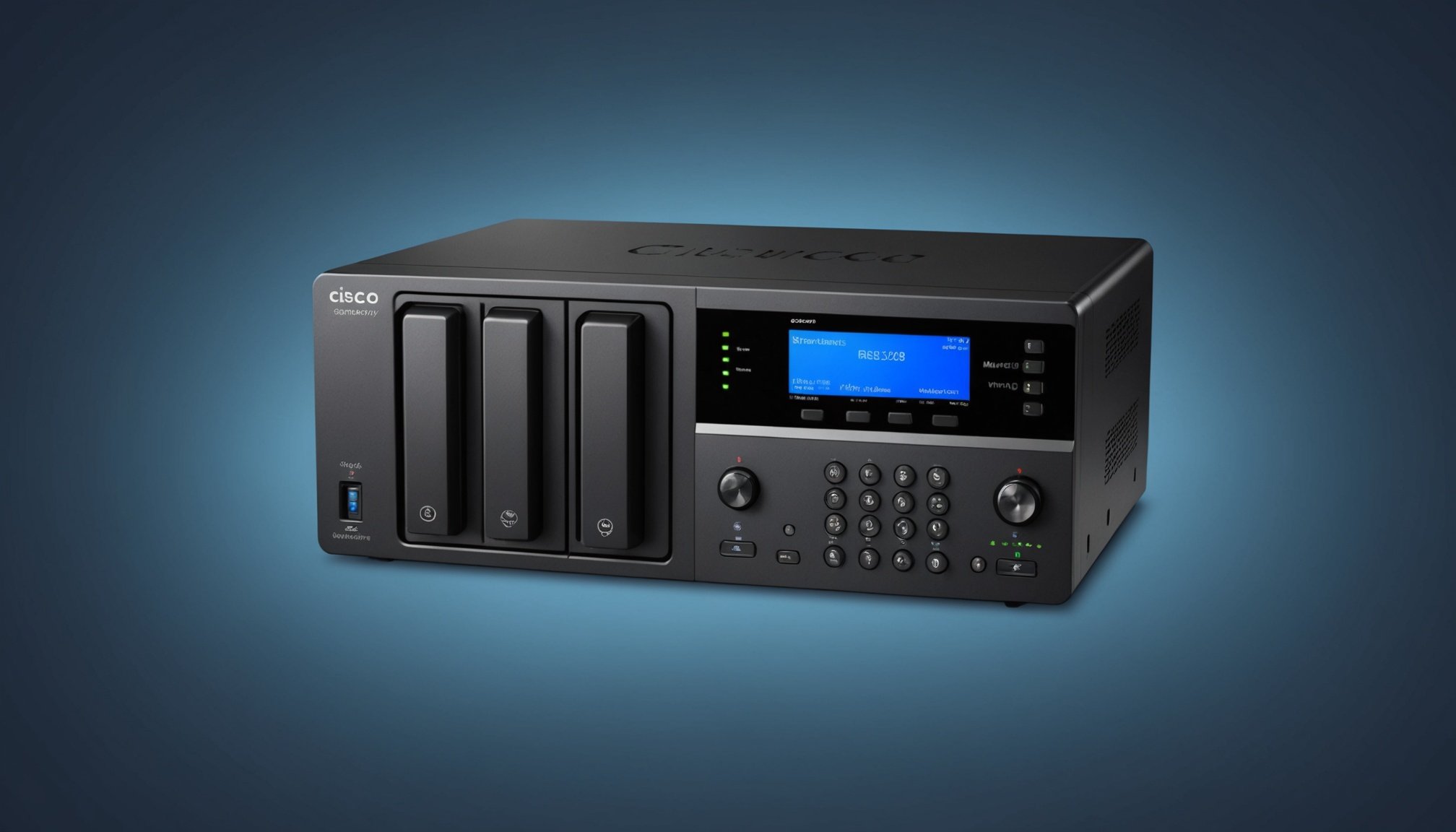Introduction to VoIP Systems
Voice over Internet Protocol (VoIP) technology represents a significant advancement in the field of telecommunication, providing a flexible and cost-effective alternative to traditional phone lines. With VoIP, you can make voice calls using a broadband internet connection instead of a regular (or analog) phone line, making communication more seamless and adaptable to modern needs.
The Basics of VoIP
At its core, VoIP works by converting voice into digital data packets that travel over the internet. This method offers numerous benefits, such as reduced costs and improved accessibility, particularly for businesses that rely heavily on distant communications.
Additional reading : Ultimate guide to wi-fi security: essential tips for safeguarding your tp-link archer c5400x network in large homes
Essential Devices: Cisco SPA112 and Synology NAS
The Cisco SPA112 is a popular Analog Telephone Adapter (ATA) that facilitates the use of analog phones with VoIP services. This device helps bridge traditional and modern communication systems, maximizing existing resources. Similarly, a Synology NAS (Network-Attached Storage) functions as a central data hub, enabling seamless data access and storage, vital for uninterrupted VoIP operations.
Integrating VoIP Systems
In a successful VoIP setup, integration is key. Devices like the Cisco SPA112 and Synology NAS must work together efficiently to ensure smooth operation. This integration allows users to enjoy enhanced functionality, reliability, and overall user experience in their communication systems.
Additional reading : Top strategies for creating a safe remote desktop connection on your lenovo thinkcentre m90n
Preparing Your Network Environment
Ensuring a stable internet connection is crucial for optimal VoIP performance. To achieve this, check your ISP’s speed and reliability, and ensure your broadband plan meets the needs of your usage. An unstable connection can cause call drops and poor voice quality. Additionally, manage network traffic by limiting bandwidth-heavy activities during calls, ensuring smooth voice data transmission.
Configuring network routers for VoIP traffic involves prioritizing voice data. Implement Quality of Service (QoS) settings to prioritise VoIP packets over other types of data. This ensures that your voice calls remain uninterrupted, even when the network is under heavy use. Adjust your router’s settings to enable SIP ALG (Application Layer Gateway) if necessary, which can facilitate better handling of SIP packets.
Preparing SIP settings for Cisco SPA112 requires accurate configuration to ensure compatibility and functionality. Enter the correct SIP credentials provided by your VoIP service provider in the device’s settings. Configure the SIP port settings carefully to avoid conflicts with other devices. For security, ensure that your SIP credentials are not easily accessible to unauthorised users, and update firmware regularly for enhanced protection and compatibility.
By following these steps, your network should be ready for a seamless VoIP experience.
Cisco SPA112 Setup Process
Setting up the Cisco SPA112 for use with VoIP involves several key steps to ensure your device is operational and optimally configured.
Unboxing and Initial Setup
Begin by carefully unboxing your SPA112 device. Within the package, you will find the main unit, an Ethernet cable, a power adapter, and setup guides. Place the device near your router to easily connect the necessary cables.
- Powering the device and connecting cables:
- Plug the power adapter into the SPA112 and connect it to a power outlet.
- Use the provided Ethernet cable to link the device to your router via the Internet port.
- Connect your phone to one of the phone ports on the device.
Accessing the Web Interface
Now that your SPA112 installation is complete, you’ll need to configure it via the web interface.
- Navigating to the device’s IP address:
- Identify the IP address assigned to the SPA112 by checking your router’s client list.
- Enter this IP into a web browser to access the configuration page.
Configuring Basic Settings
Fine-tuning your SPA112 settings is crucial for proper VoIP configuration.
- Setting up phone line configurations:
- Within the web interface, locate the Line settings menu.
- Configure parameters such as ‘Proxy’, ‘Outbound Proxy’, and ‘Subscriber Information’ based on your VoIP provider’s details.
Integrating Synology NAS for VoIP Applications
Deploying a Synology NAS system for VoIP applications demands thoughtful configuration to optimise data flow. First, ensure your Synology NAS is correctly set up for VoIP storage. This involves connecting your NAS to the same network as your VoIP system. Access the Synology DiskStation Manager and navigate to the shared folder settings to create a designated area for VoIP data management. Establish user permissions keeping data security in priority.
Once configured, the benefits of employing a Synology NAS for VoIP data management truly unfold. Centralised storage delivers seamless access to voice files, enhancing collaboration and resource allocation across teams. Latency reduction is one of the most appreciated advantages, keeping communications uninterrupted and clear.
When configuring your Synology NAS to streamline voice data access, it helps to enable network protocols that best suit your operations. Protocols such as NFS or SMB facilitate faster data retrieval and enhance integration with existing VoIP solutions. Moreover, employing NAS for data management ensures redundancy through RAID configurations, offering a robust path to recoverability in case of hardware failures.
By aligning your Synology NAS with VoIP applications, you establish an advanced backbone for managing conversations, voicemails, and data analytics, fuelling efficient and resilient unified communications systems.
Troubleshooting Common Issues
VoIP telephony has revolutionised communication, but it does have its share of challenges. Understanding common issues and their resolutions can enhance your VoIP experience significantly.
Connectivity Problems
A primary VoIP troubleshooting concern is connectivity. Frequent disconnections or inability to establish a call indicate potential network issues. To resolve these, ensure your network connection is stable and runs at the necessary speed. Reducing bandwidth-heavy applications and prioritising VoIP traffic through Quality of Service (QoS) settings can offer significant improvements.
VoIP Quality Issues
Call quality is paramount for VoIP users. Common issues include latency and echo. To enhance quality, check your internet speed and router configuration. Ensure devices are hardwired to the network when possible, as Wi-Fi connections might fluctuate. Additionally, employing a dedicated VoIP router or devices that support voice prioritisation can solve many of these issues.
Device Setup Errors
Improper device configurations can lead to numerous VoIP errors. Common setup errors include incorrect login credentials and unsupported equipment. When troubleshooting, verify all credentials and ensure your devices are compatible and updated with the latest firmware. Furthermore, referring to the manufacturer’s guidelines can assist in proper configuration. Adjusting ping settings and confirming network compatibility is also beneficial.
Optimizing Your VoIP System Performance
For VoIP optimization, ensuring optimal performance is essential to maintain clear and uninterrupted communication. Implementing best practices can significantly enhance the quality and reliability of your VoIP system. One of the critical elements in this process is managing Quality of Service (QoS) settings.
Best Practices for Maintaining VoIP Performance
To begin with, monitoring your network bandwidth regularly is vital. VoIP systems rely heavily on a stable internet connection, so it’s crucial to allocate enough bandwidth to support voice traffic, especially during peak usage times. Another effective strategy is prioritizing VoIP traffic over other types of traffic in your network. This can be achieved by configuring your router to dedicate a portion of your bandwidth specifically for VoIP calls.
Importance of Quality of Service (QoS) Settings
QoS settings have a significant impact on VoIP performance. They ensure that voice packets are prioritized over less critical data, reducing latency and packet loss. Configuring QoS settings appropriately guarantees that your calls remain high quality, even when your network is handling multiple tasks simultaneously.
Regular Maintenance and Software Updates
Regular maintenance and keeping your system software up-to-date are also essential for optimizing VoIP performance. Software updates often include bug fixes and performance enhancements, while regular system checks can preemptively identify and resolve potential issues.
Additional Resources and User Testimonials
In the world of VoIP resources, continuous learning and community engagement are pivotal. For those inclined to delve into advanced configurations, comprehensive guides are your starting point. They illuminate the complexities of setup, enabling users to customise systems according to specific needs. Community forums serve as a thriving hub for enthusiasts and professionals alike to exchange insights and troubleshoot common issues.
User reviews often highlight the satisfaction derived from these resources. One testimonial elegantly captures their essence: “The advanced configuration guides demystified the intricate settings, making the system more effective and user-friendly.” Access to these guides ensures not only a seamless setup but also enhances the overall user experience, fostering confidence in system capabilities.
If exploring beyond the basic setup intrigues you, consider these suggested resources:
- Advanced configuration manuals for intricate setup solutions.
- Community forums for real-time problem-solving and peer support.
- Online tutorials and webinars hosted by experts in the industry.
Diving into advanced configurations not only refines your technical prowess but also ensures optimised system performance. By leveraging these resources and testimonials, users can make informed decisions, ensuring their VoIP experience is both efficient and tailored to their specific needs.






